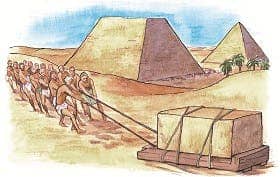
This finding is reported in the article titled: A Self-Dedication Addressed to Anubis – Divine Protection against Malevolent Forces or Forced Labour? by egyptologist Kim Ryholt of the University of Copenhagen, that appeared in the publication Lotus and Laurel – Studies on Egyptian Language and Religion.
An extract from the ancient texts reads as follows: “I am your servant from this day onwards, and I shall pay 2½ copper-pieces every month as my slave-fee before Soknebtunis, the great god.”
One question that appears when reading these texts is where did the slaves’ money come from ? As Ryholt puts it, “slaves in antiquity, as in modern times, were generally allowed to earn some money on their own.” Although the means through which the slaves generated their income is known largely from speculations, Ryholt mentions one literate slave called Ptolemy, who managed to earn some money by being a “dream interpreter” in his spare time.
After they were discovered in illicit excavations in 1930, the papyri slave contracts were scattered in fragments across Egypt, Europe and the United States, causing researcher Kim Ryholt to spend years in trying to find, translate and analyse these texts. He was the first to analyse collectively over 100 papyri containing such contracts.
The contracts, written in the Demotic script – an ancient Egyptian language, mentioned that some of the slaves also signed up their descendants for serving the temple: “I am your servant with my children and the children of my children”.
![One of the papyri found near the Ancient temple of Tebtunis, located in the northern part, or lower Egypt [Via ] One of the papyri found near the Ancient temple of Tebtunis, located in the northern part, or lower Egypt [Via ]](https://cdn.zmescience.com/wp-content/uploads/2013/01/image_801.jpg)
One of the papyri found near the Ancient temple of Tebtunis, located in the northern part, or lower Egypt [Via sci-news.com]
“90 per cent of the people who entered into these slave contracts were unable to name their fathers, although this was normally required. They were presumably children of prostitutes. This is a clear indication that they belonged to the lower classes which the king could subject to forced labor, for example digging canals, if he so desired. However, we know from other contemporary records that temple slaves were exempt from forced labor.”
“Many therefore chose to live as temple slaves because it was the only way of avoiding the harsh and possibly even deadly alternative; the temple was simply the lesser of two evils for these people. And for the temples, this was a lucrative practice that gave them extra resources and money.”
[Via the Nature Blog House of Wisdom]









